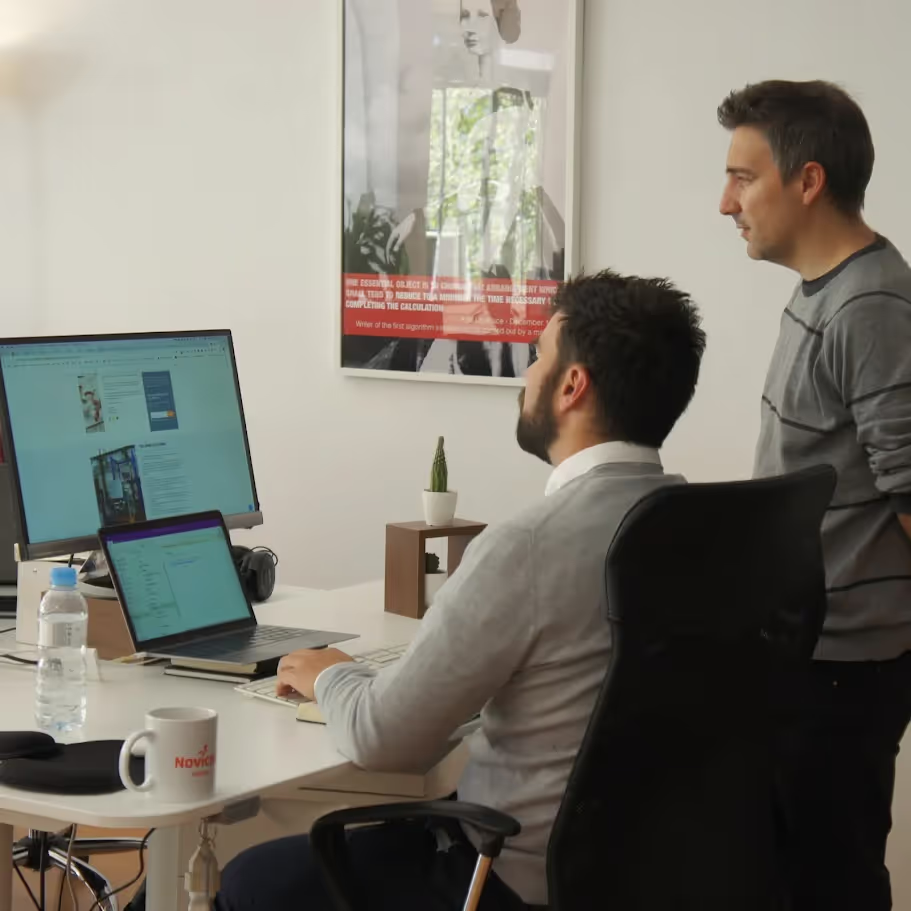DAM Consulting
Organisations that implement a DAM system recover an average of 13.5 hours per employee per week. 🎯 Your company can also save time and resources with a well-integrated DAM platform.
.webp)
What is a DAM
A Digital Asset Management (DAM) system centralises all your company’s files—images, videos, documents, and creative assets—in one single location accessible by every team.
But it’s not just about storage. A DAM also enables version control, licence management, approval workflows, and integrations with the rest of your tech stack.
.webp)
You need a DAM if you have...
If you identify with any of these situations, your company may need a DAM.
Wasted time searching for files
Your team wastes time every day trying to find the right images, videos, or documents across multiple folders or platforms.
Duplicate and uncontrolled versions
Unnecessary copies are created or outdated files are used, leading to mistakes and constant rework.
Brand inconsistency
Assets with outdated logos, fonts or messages are published, damaging your brand consistency and causing confusion across different customer touchpoints.
Slow and unclear approval processes
Reviews happen via scattered emails and chats, making it hard to track feedback and delaying tasks.
How to choose a DAM
Choosing a DAM is not a fleeting decision. Therefore, selecting the right one for your company will require following certain steps to ensure a choice aligned with your specific objectives and needs.
Involve your team
Bring together the teams who work with digital assets to understand their challenges: what they struggle to find, how they share content, and which tasks waste the most time.
Each department has different needs, and their input will help identify which features the system must include
Evaluate your options
Not all DAM systems are the same. Compare several alternatives and assess ease of use, integration capabilities, and scalability. Look for a solution that adapts to your way of working—not the other way around.
.webp)
Ask the right questions
Make sure to ask each DAM provider the key questions and request a demo to check if it fits your current and future needs.
We can help you formulate the right questions for each platform so you can make an informed decision.

Benefits of a DAM in
each area of your company
A DAM system improves how each team manages and uses digital files. Here's how it adds value across departments:
Marketing
Ensures every campaign uses brand-aligned and up-to-date visual content.
IT/Technology
Improves system connectivity, eliminates duplicates, and ensures a secure platform.
.webp)
Commercial
Organises and shares images, manuals, and multimedia product assets in a structured and controlled way.
Sales
Quick access to updated visual catalogues, presentations, and materials to support sales efforts.
How a DAM agency
can help you
At Novicell, we offer tailored solutions based on your industry and business needs. We guide you from DAM selection through to full implementation.
What is a DAM system and what is it used for?
A DAM (Digital Asset Management) system centralises, organises, and distributes all of a company’s digital assets from a single location.
It’s used to manage images, videos, documents, and other digital files—ensuring version control, licence tracking, and access rights. It's key for companies that produce and use content at scale.
What are the benefits of a DAM for B2B and B2C companies?
For B2B, a DAM helps organise large volumes of technical content, product sheets, catalogues, and sales materials.
In B2C, it streamlines campaign management, promotional images, ecommerce content, and social media assets.
In both cases, it speeds up execution, improves brand consistency, and enhances team collaboration.
Who needs a DAM solution?
A DAM is especially useful for medium-sized or growing B2B and B2C companies managing increasing volumes of digital assets across multiple teams and channels.It helps them work with up-to-date, well-organised, and accessible content from a single platform—boosting efficiency and reducing errors.
How long does it take to implement a DAM system?
It depends on the volume of assets, number of users, and integration complexity. Most full implementations take between 2 and 6 months and include analysis, setup, content migration, and training.
Which DAM platforms do you work with?
At Novicell, we work with platforms such as Bynder, Cloudinary, and Kontainer. These solutions enable secure asset management and sharing, scalable content distribution, and integration with CMS, PIM, or creative tools.
How much does it cost to implement a DAM system?
The cost depends on the volume of assets, number of users, and level of integration required.It includes licences, storage, technical support, and training.
While it requires initial investment, many companies quickly see ROI through time savings, error reduction, and improved content efficiency.
What’s the difference between a DAM, PIM and CMS?
A DAM focuses on managing digital assets (like images and videos), a PIM handles product data (descriptions, specs, prices), and a CMS manages and publishes web content.
Together, they cover all content and product management needs.
What experience does Novicell have with DAM implementation?
With over 10 years of experience delivering digital solutions, Novicell helps companies implement DAM systems that optimise digital asset management.
We support clients from initial consultancy to full implementation, tailoring every project to the company’s sector and internal team needs.
.avif)











